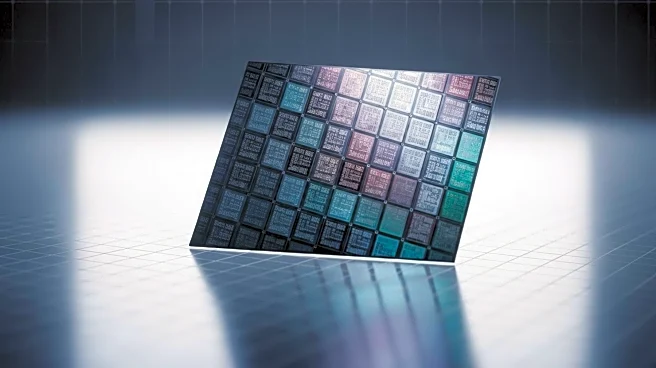What is the story about?
What's Happening?
The National Institute of Standards and Technology (NIST) in the U.S. has been using quantum devices to define the volt for over three decades. This involves superconducting junctions exposed to microwaves, creating a voltage difference based on quantum effects. This method ties the definition of a volt to fundamental constants of the universe, such as the charge of an electron and Planck's constant. This approach is part of a broader trend where metrologists worldwide have redefined several units in the International System of Units (SI) to be more closely linked to quantum physics. This shift reflects advancements in understanding and controlling quantum systems, allowing for more precise measurements.
Why It's Important?
The use of quantum measurements for defining units like the volt has significant implications for industries and scientific research. It ensures consistency and accuracy in measurements, which is crucial for manufacturing, technology development, and scientific experiments. By tying units to fundamental constants, the standards become universally accessible, allowing for more democratized access to precise measurement tools. This shift also supports advancements in technology, such as atom-based clocks, which could improve early warning systems for natural disasters and enhance geographical measurements. The move towards quantum definitions represents a step forward in scientific precision and international collaboration.
What's Next?
The future of quantum-based measurement standards involves further international acceptance and integration. While electrical units like the volt are not yet universally accepted in the same way as other units, ongoing experiments aim to establish these standards globally. Researchers continue to develop more precise quantum devices, which could redefine how time and other measurements are standardized. The work of metrology remains influenced by national policies and international diplomacy, highlighting the need for stable funding and collaboration to advance these scientific endeavors.
Beyond the Headlines
The shift to quantum-based measurement standards also has cultural and ethical dimensions. It challenges traditional Eurocentric approaches to metrology, promoting a more inclusive and flexible system. This democratization of measurement standards could lead to broader participation in scientific research and innovation, fostering global collaboration and reducing barriers to entry for developing countries.
AI Generated Content
Do you find this article useful?














